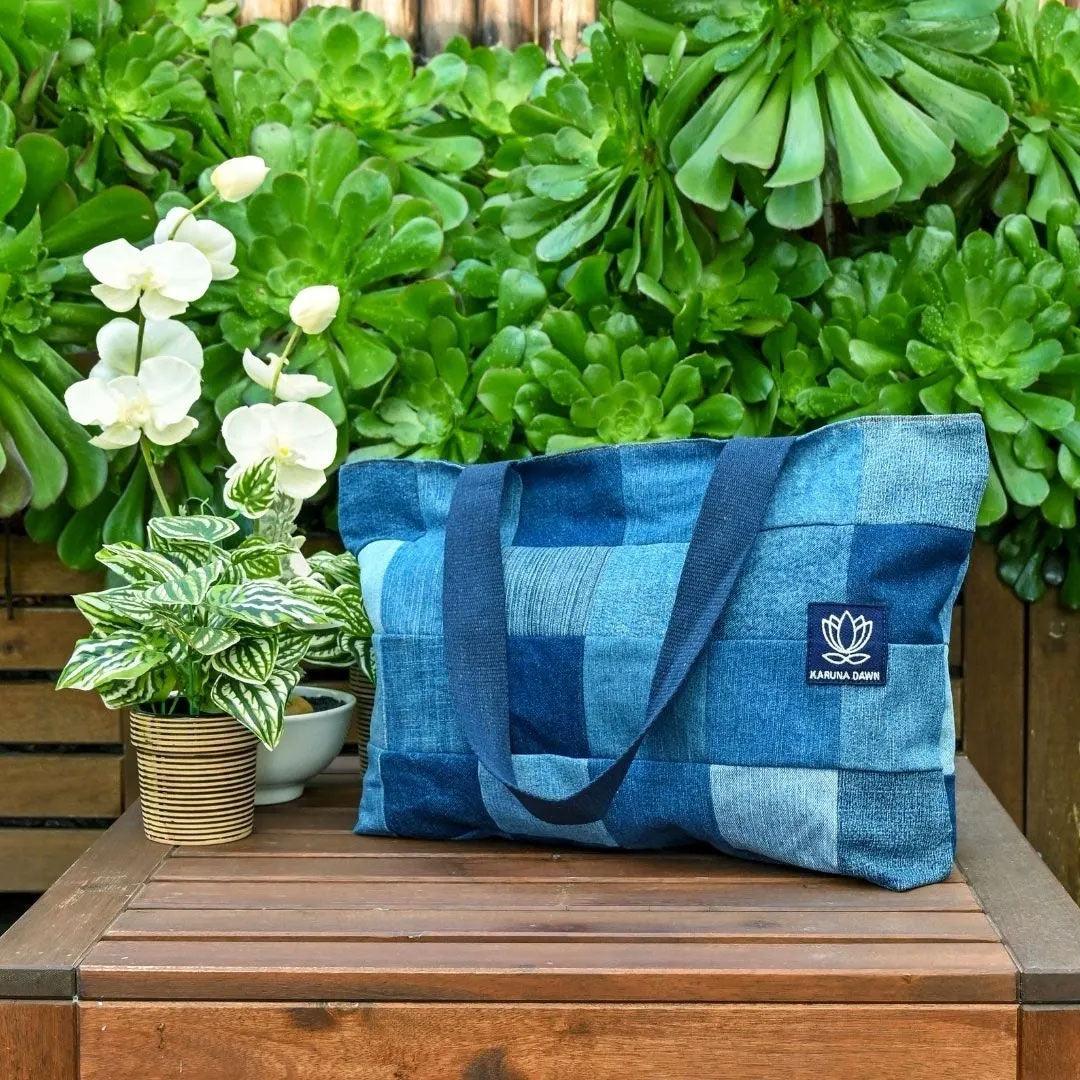
Up-cycled Bags & Fashion: What is it and why it's better?
Share
The world's natural resources are precious. They include air, water, soil, minerals, fuels, plants and animals. We need to conserve the use of natural resources so that future generations are able to benefit from them. Some resources such as fossil fuels (coal, oil, gas) are non-renewable meaning once they have been depleted, they are gone.
Unfortunately we are a wasteful society and through our farming practices we have eroded soil, cleared forests and in so doing destroyed habitats and have polluted our water and air.
Fashion is a major contributor to pollution, the destruction of forests and encouraging the mindset that overconsumption is ok. It's not. We are consuming and throwing away clothes at a rapid rate and more than the planet can handle. According to Greenpeace we are buying 60% more items of clothing every year and keeping them for about half as long as 15 years ago, producing immense volumes of textile waste.
To curb the huge amounts of waste going to landfill, up-cycling presents us with a great alternative. Let's explore this further.
What is Up-cycling?
Up-cycling is the creative re-use of by-products, waste materials or unwanted products into new materials or products. In essence the "old" product is turned into a new product, giving it a second-life. It takes innovation and creativity to take what has been discarded and to turn it into something "new", of value (sometimes greater value) and of quality so that its lifespan is expanded.
What's the difference between Up-cycling & Re-cycling?
Re-cycling on the other hand, is taking the product or material and totally breaking it down to create something very different. Up-cycling doesn't break down the product, rather it re-uses and re-purposes what has been produced.
With re-cycling you're most likely unable to tell what the original product was as it has been broken down entirely. You can think of re-cycling as an industrial process and up-cycling as more of a creative process.
Benefits of Up-cycling
- Saving garments from going to landfill -As mentioned above, fashion creates an incredible amount of waste. In fact,globally, there’s one garbage truck of clothing waste dumped into landfill or burnt EVERY SECOND!
- Encourages creativity and supports artisanal work - behind every up-cycled product is the maker whose inventiveness has breathed new life in a garment that would have otherwise been discarded. Up-cycling also supports small, local makers and rural communities
- Protects our natural resources - utilising new, raw materials takes a heavy toll on our natural resources. When you up-cycle you are using resources that have already been taken and re-purposing it.Traditional cotton farming uses an incredible amount of water and it's staggering to think a single cotton t-shirt takes 2,700 litres of water to produce.
- Unique items - when you purchase up-cycled products, you are purchasing unique items that can't be found in stores or in mass produced items. This will be one of a kind that you can wear or accessorise with pride.
How can I Up-cycle?
- Old t-shirts are great for making hair accessories. With some sewing ability and the use of elastic, they can be turned into scrunchies or headbands. Or even more simply, you can cut out a decent length and sew the sides to make it look neat and simply tie a bow
- Old t-shirts - if sewing is not your thing then cut out decent size squares from the t-shirt to use as re-useable kitchen towels. Single use paper towels create a large amount of waste
- Revamp the shape of old clothes - This can really change the fit of old clothes and make you fall in love with them all over again! You can crop the length of jeans and turn them into shorts or crop the length of a t-shirt or add extra fabric onto a t-shirt. You can also add or remove sleeves
- Add embellishments or embroidery - This can give a tired piece of clothing a fresh new look. It makes your piece unique and interesting and can take your clothing to the next level.
Up-cycling is about creativity. Don't be afraid to give things a go. I know that many of the ways to Up-cycle does involve some level of sewing so if you're like me and totally hopeless with a needle and thread, don't let that put you off. See if someone can do this for you or ask a friend who may have an interest in sewing to help you to learn.
Karuna Dawn Up-cycled bags
Our innovative, unique 100% up-cycled denim collection partners with a company in India dedicated to zero waste practices.
Our denim collection is made using post-consumer and post-industrial denim (manufacturers' off-cuts), breathing new life into a garment that would have otherwise gone to landfill.
Raw materials are received in a multitude of shapes, sizes and colours and they undergo a vigorous washing process to ensure hygiene. From here, a significant amount of time and effort is spent on sorting and cutting the material into the right shapes and sizes.
The bags are designed and tailor-made to compete on par with new products.
Every element in the process is carefully chosen so the end product not only increases life of the material but provides you with a truly unique and authentic bag that has been skilfully hand-crafted and made to last.
We have 3 beautiful designs.
Chequered tote bag and this is pictured in the header image.
Beautiful patchwork designed bag that you can take anywhere. Super stylish and practical, you can fit all that you need for the day.
Although this design may look simple, it takes a lot of skill and creativity to ensure the shades of blue are co-ordinated and seamlessly hang together as a cohesive pattern.
The material for this bag comes from at least 8 - 10 different pairs of post-consumer jeans.
The Bento bag originates from Japan and the unique design derives its value from a light-weight structure yet spacious enough to fit all your belongings.
It has a self-closing mechanism when worn over the shoulder.
The bag is made from panels out of at least 3-4 post consumer jeans. The lining is made from beautiful post-industrial (manufacturer's off-cuts) Kurti (cotton) fabric.
The perfect bag when you're on the run!
Use as a cross-body or over the shoulder.
The strap is easily adjustable to your liking. The inside lining is sourced from post-industrial (manufacturer's off-cuts) material.
In conclusion
What is Up-cycling
Up-cycling is the creative re-use of by-products, waste materials or unwanted products into new materials or products.
What is the difference between Up-cycling and Re-cycling
Re-cycling is taking the product or material and totally breaking it down to create something very different. Up-cycling doesn't break down the product, rather it re-uses and re-purposes what has been produced.
Top 4 Benefits of Up-cycling
- Saving garments from going to landfill
- Encourages creativity and supports artisanal work
- Protects our natural resources
- Promotes development of unique items
How can I Up-cycle
- Use old t-shirts to create hair accessories
- Use old t-shirts and cut out squares to create cleaning clothes
- Add length or crop length off t-shirts, jeans and pants to create something new
- Add embellishments or embroidery to give a tired piece new life
Karuna Dawn Up-Cycled bags
We partnered with a zero-waste company in India to create unique and innovative up-cycled denim bags
Check out our bags up-cycled range here








